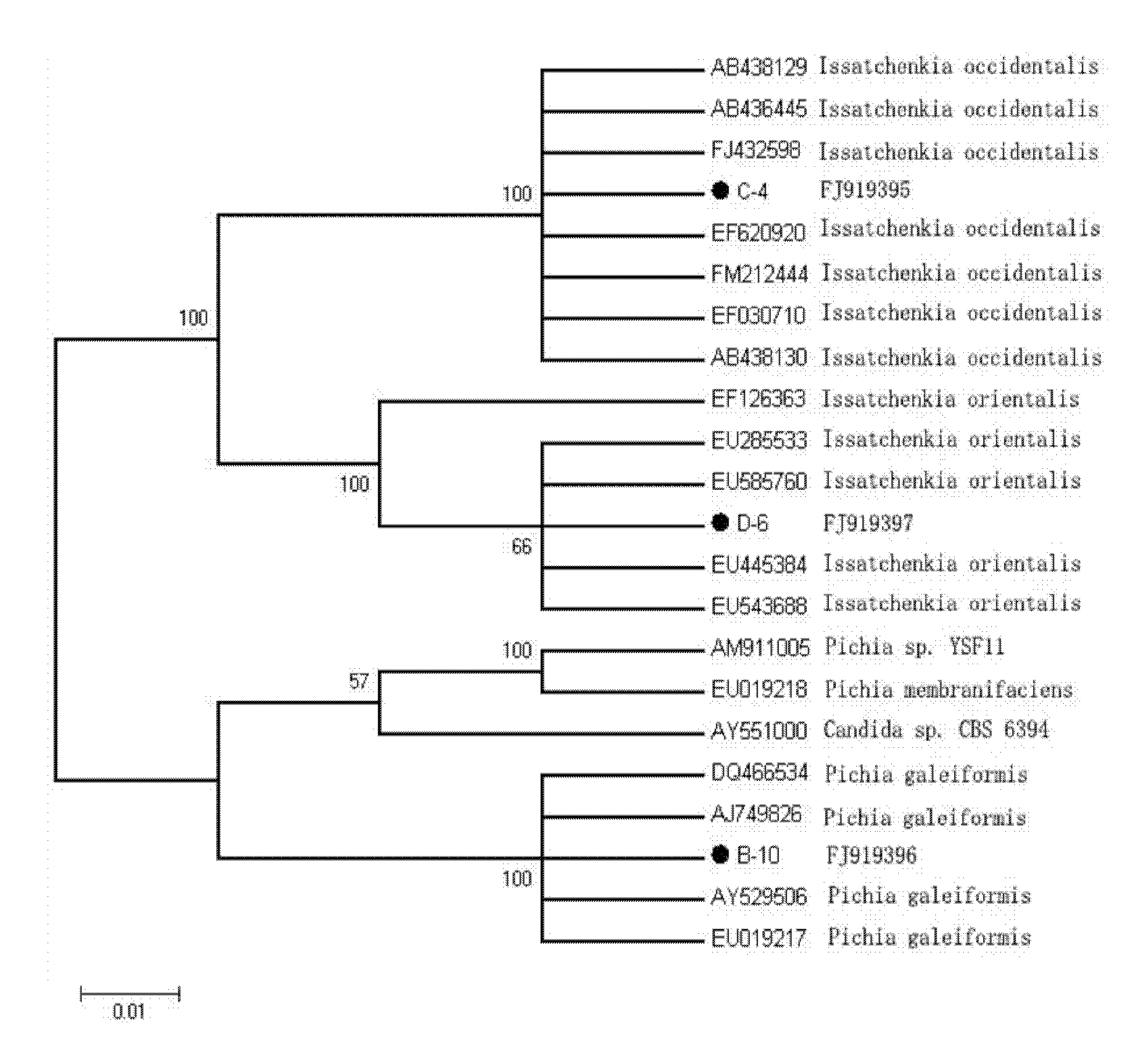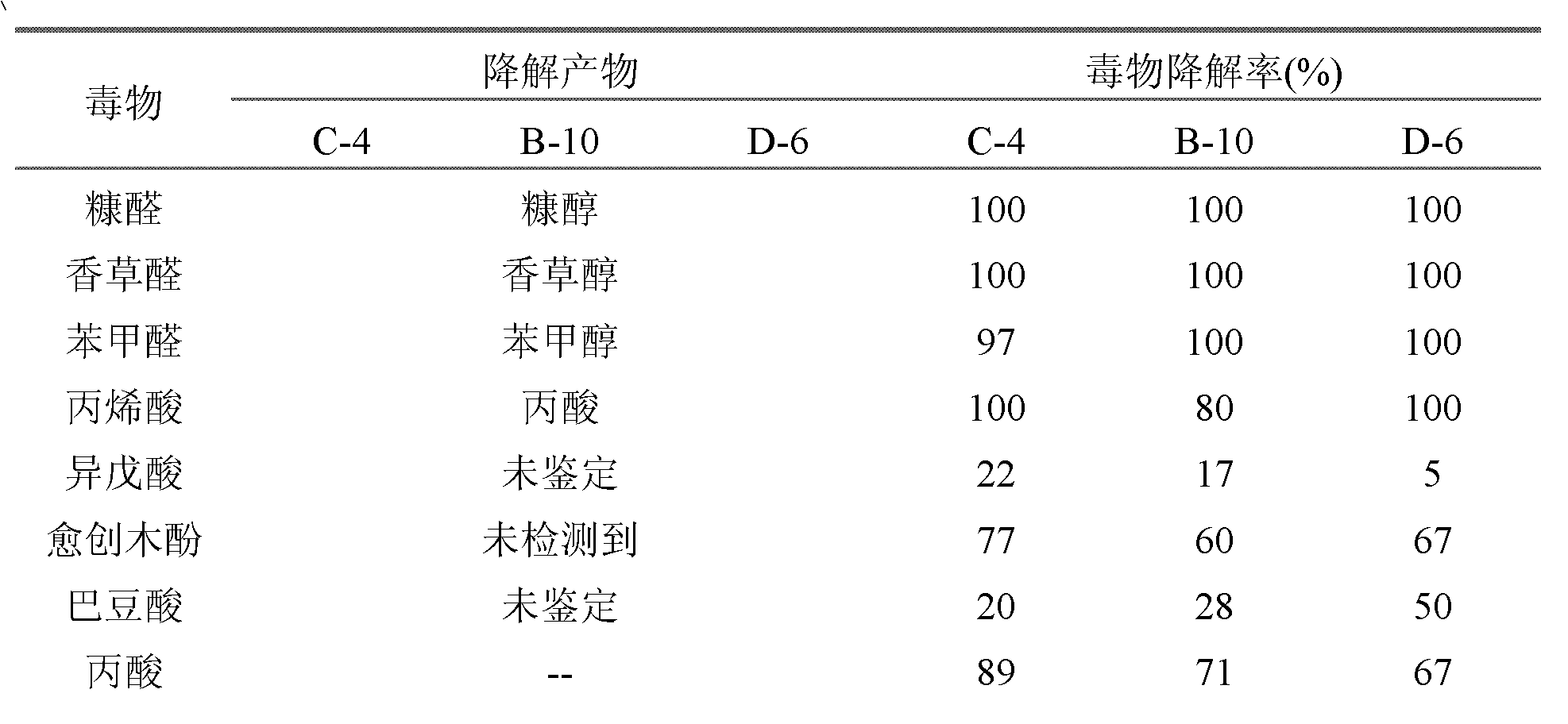Novel pichia strain and method for mixing and culturing same to biologically detoxify hemicellulose hydrolysate
A Pichia pastoris and hemicellulose technology, applied in the biological field, can solve the problem that it is difficult to achieve high efficiency in biological detoxification
- Summary
- Abstract
- Description
- Claims
- Application Information
AI Technical Summary
Problems solved by technology
Method used
Image
Examples
Embodiment 1
[0070] Dry bagasse 3kg, add H2SO4 solution (2.5%, w / w) according to the solid-liquid ratio (w / v) of 1:7, hydrolyze at 120℃ for 2h, collect the filtrate by centrifugation, wash the filtrate once with water, combine the filtrate and adjust with lye The pH value is 3-7, vacuum concentration is 3 to 5 times, and the precipitate is removed by suction filtration to obtain 3.5L of bagasse hemicellulose hydrolysate. The xylose content of this hydrolyzate is about 12% (w / w).
Embodiment 2
[0072] Dry corn cob 5kg, crushed to a particle size of 1cm or less, add 1% (w / w) H2SO4 solution to soak for 1 hour at a solid-liquid ratio of 1:10, and centrifuge to remove free acid. The soaked corncobs are put into a 50L steam explosion tank, steam is injected and the pressure is increased to 0.7Mpa for 5 minutes, and then the steam valve is opened to release the pressure and burst instantly. Collect the steam explosion material in the material cavity and collect the steam explosion liquid by centrifugal separation, neutralize the calcium carbonate to a pH value of 4-7, and remove the sediment by suction filtration to obtain 12L of corncob steam explosion hydrolysate. The xylose content of this steam explosion hydrolysate is about 11% (w / w).
Embodiment 3
[0074] According to the ratio of 100 g bagasse to 0.8 g hydrochloric acid, the 10% hydrochloric acid solution was evenly sprayed on the bagasse raw material, and the solution was left overnight to make the acid solution diffuse evenly in the bagasse tissue. Put the bagasse that has been acid-treated overnight in a steam explosion tank, put in steam, maintain it for 3 minutes under a pressure of 0.7MPa, and then detonate to release the pressure instantly. Collect all the samples in the material cavity, and collect the liquid part by centrifugal filtration. The residue is washed once with a little water, the two filtrates are combined, and concentrated twice in vacuum. The pH value is adjusted to 4-7 with alkali, and the precipitate is removed by centrifugation to obtain the bagasse hemicellulose steam explosion hydrolysate, the xylose content of which is about 120g / L.
PUM
 Login to View More
Login to View More Abstract
Description
Claims
Application Information
 Login to View More
Login to View More - R&D
- Intellectual Property
- Life Sciences
- Materials
- Tech Scout
- Unparalleled Data Quality
- Higher Quality Content
- 60% Fewer Hallucinations
Browse by: Latest US Patents, China's latest patents, Technical Efficacy Thesaurus, Application Domain, Technology Topic, Popular Technical Reports.
© 2025 PatSnap. All rights reserved.Legal|Privacy policy|Modern Slavery Act Transparency Statement|Sitemap|About US| Contact US: help@patsnap.com



